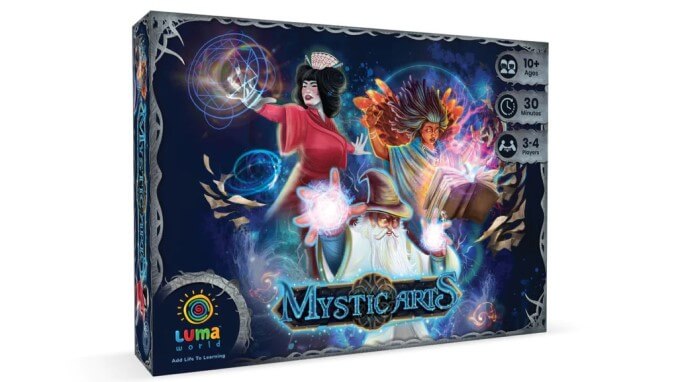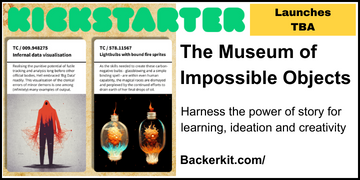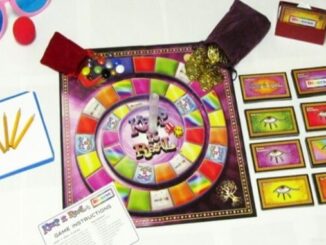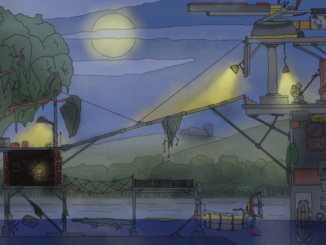
Luma World is an educational game design company known for creating games and activities that are intended to be both fun and educational. Their products often focus on skill development in areas like mathematics, language, science, and logical reasoning, and are typically aimed at children.
Luma World’s approach to learning through play aligns with contemporary educational theories that emphasize active engagement, problem-solving, and hands-on experiences as effective learning methods. Their games are designed to be age-appropriate, culturally relevant, and engaging for children, potentially making them a popular choice for parents and educators seeking to supplement traditional education methods with interactive learning tools.
Ludogogy has had the opportunity to play six of Luma World’s most popular titles, so here is a mammoth-sized review of all six.
Galaxy Raiders
for age 9+, 30mins, 2 – 4 players – A space-based game where players are trying to capture new planets and moons, while stopping other players from doing the same.
Teaches: Number operations, mental maths, resource management, long-term planning, reverse engineering and problem solving.
Galaxy Raiders consists of a number of hexagonal ‘planet boards’, marker pegs in four colours, an operation die, which shows all four basic maths operators and wildcard, cards with numbers on, ‘power cards’, which allow you to take actions which influence the game, and player console mats.
One more planet board than the number of players is used, and the winner is the first player to win two planet boards.
Players win a planet board by first ‘capturing’ the moons and then the planet. Each board has four moons and one planet, each with a target number on them.

On their go, a player rolls the die and uses that operator, and two of the number cards on their (openly displayed) player console, to achieve the target number on a moon or a planet (only after all four moons have been captured). They may then place a peg on that number position.
Power cards can be used to ‘Evict’ another player’s peg, ‘Replace’ another player’s peg with their own or to be able to use the ‘Any Number’ wild card in their calculation.
There are several additional rules around placing pegs and using power cards, which are dependent on game state (e.g. you can only replace someone in a planet if you have captured one of its moons), and it is these additional rules that make this more than just a game of mental arithmetic, and into one that requires strategic planning. This provides enough challenge for the older target age group, and will be fun also for adults.
The combination of the requirement for some quite complex thinking skills and a competitive ‘battleground’ will ensure that this game is replayable for some time to come.
The game is pitched at the 9+ age group and is very suitable for children at that age. The planning and problem solving are the more complex aspects of the game, so it could be also be played in a ‘team’ format with younger children, with the younger child doing the calculations, and maybe an adult or older child taking the strategic planning role.
Overall an excellent game for school or home, to polish up those mental maths skills.
Crafty Puggles
for age 6+, 30mins, 2 – 4 players – Cute mole-like creatures attempt to be the first to reach hidden treasure by burrowing under the grounds of a stately home. A tile-placement and path-building game.
Teaches: Basic fractions, mental maths, pattern recognition, critical thinking, motor skills, creativity, planning & strategy
Crafty Puggles consists of a treasure game board on which square tiles are laid to create a path to the treasure. The square tiles are split into quadrants which are either mud (passable path) or grass (which block the path),and therefore also represent the fractions ¼, (a quarter mud, three quarters grass), ½ (50/50 mud and grass) and ¾ (a quarter mud, three quarters grass).
Each player also has their own ‘den mat’ where they can ‘bank’ tiles, and grow and use a ‘Puggle Boost’ feature, which allows them to play actions which affect their own or their opponent’s progress.
A fraction die is thrown to indicate which tile a player will take from the fraction. Each player is attempting to navigate from one corner of the board to the centre, and is therefore working within a quarter of the game.
An action die is also rolled and allows the player to; place a tile on an empty space on the game board (to, hopefully, extend your path), rotate a tile, either your own to improve, or your opponent’s to block their progress, move your puggle one step along the ‘Boost’, or move a ‘Hound’ playing piece (a blocker) to any blank space on the board, or to a tile showing the fraction you also threw.

The different mechanics of this game combine to provide a fun, engaging experience for young players, with just the right balance of acting to progress your own position and being able to use ‘take-that’ actions to mess with your opponent’s plans.
Playing this game will definitely flex skills in patterns recognition and in planning and strategy. The possible combinations of the two dice mean that players have to consider carefully from a large number of different play options, what will best move them towards their goal, encouraging critical and creative thinking.
The fractions offered in this game are quite limited, but that is appropriate for the target age group, and is more than made up for by the opportunities for strategic planning.
The fact that there are many combinations of possible actions, e.g. from the dice, and from the five possible options when you activate a Puggle Boost means that there is considerable replayability in this game, and it will keep young players coming back.
The ‘take that’ aspects of the game are a considerable source of fun and interaction, and will also be useful in teaching children how to deal with disappointment at having their plans spoiled.
Overall, I would recommend this game for 5 – 7 year olds, as a fun experience which also reinforces skills in planning to reach a specific goals through pattern matching. As a gateway game, it could be useful to teach the skills that could lead youngsters on to commercial tile-laying games such as Tsuro and Carcassonne.
Carcassonne is available on Amazon
Guess the Fence
for age 8+, 30mins, 2 players – A game which uses the ‘Battleships’ mechanic of hiding your actions from your opponent, which you then have to deduce. Whoever first guesses correctly the shapes and positions of the fences built by their opponent, wins.
Teaches: Geometry, patterns, data interpretation and planning, imagination and creativity, taking calculated risks, visual reasoning, problem solving, communication, motor skills.
In Guess the Fence, each player has a board, which is hidden from their opponent’s view by a screen. Much like battleships, each player must position a set number of specific shapes on their board, and then attempt to find (by informed guessing) all their opponents shapes first, to win.
The shapes used are one each of: large triangle, square, small triangle and rectangle
In this case, the shapes are constructed from three different lengths of plastic ‘fence’, consisting of a straight length and a ‘vertex’ (a small round hoop). The shapes are built by laying the fences on the board with the vertices corresponding to numbered circles on the board.

There are rules for construction e.g. only two fences can join at a vertex, a fence must start and end at a vertex etc.
Again, like Battleships, a player can mark whether their guess has ‘Hit’ or ‘Miss’ on a wipe clean marking sheet, and use the information gained from that to inform further guesses.
Battleships is available on Amazon
Unlike Battleships, the player can choose to make one of two kinds of guess on a turn. They may call out a numbered vertex. If it is a hit, they mark that in green. If a miss, in red. Or they may choose to guess a whole shape, by calling out all its vertices ‘Do you have a triangle at 3, 4 and 9?’. A hit here will give them 3 points and they can colour the shape in green on the marking board. A miss attracts a -1 score.
The jeopardy created by the possibility of losing points for a wrong shape guess introduces a interesting twist on the standard Battleship game, further emphasising the need to discover and correctly analyse information as well as simply scoring lucky hits.
This is a great game for developing visual reasoning, and data interpretation, including the pretty high order skill of extrapolating general principles from rules and applying them in differing situations. The geometry involved may be a little simple for the target age group but the overall experience provides opportunities for a pretty complex sessions of planning and problem solving, in order to play well..
At first glance, this game does not appear to have as much replayability as, say, Crafty Puggles. But then I remember how playing Battleships with my dad kept me engrossed for years worth of summer camping holidays. It’s the intense competition that does it. And for the same reason it’s a game which parents can quite happily play with their kids too.
As the communication is deliberately kept to a minimum in a game of hidden information such as this, it is not an obviously ‘social’ game, but it does require clear and concise communication – in itself, a very important skill for youngsters.
Overall, I would recommend this game for parents and children who relish the opportunity to compete directly, and that it is very suitable for developing the spatial and visual reasoning skills of children between 7 and 10 years.
Lord of the Bins
for age 6+, 30mins, 2 – 6 players – Find hidden value in garbage. A game about sorting and recycling rubbish
Teaches about: Different kinds of waste, segregation and sorting, caring for the environment, sustainable cities and communities, responsible consumption.
Where my wider family comes from in the North of England, there’s a saying. “Where there’s muck, there’s brass”, meaning that there’s value in what usually gets thrown away. This is the premise behind this game. Junkland, where the game is set, is buried under a stinky heap of garbage, but the Lords of Junkland have realised there’s treasure to be found.
The major components of Lord of the Bins are cards; four different bin cards, eight Trump Trash Cards (yes, I know, I was thinking that too), and 60 trash cards representing different kinds of rubbish. Each trash card is numbered 1 to 9, where 1 is easy to compost or recycle, and 9 is difficult to do so. Additionally, there are 25 yellow gems, 6 green gems (and a bag to keep them in),a key card token, a table listing all the different trash in the same four categories of the bin cards and a rather fetching raccoon hat.

Players hold hands dealt from a main deck of trash cards and trump trash cards shuffled together and each turn they take one more card from a ’marketplace’ of face-up trash cards. Depending on how many cards they choose to take and the current state of cards in the marketplace, they may also end up placing gems of marketplace cards, of picking up gems along with the cards they take.
Players then either play a single card (place it in its appropriate bin) or play a gem; an action which unlocks powerful strategic actions in the game, such as being able to play extra cards into bins.
Getting rid of cards is an important part of the game, as the winner is the player who has the lowest score when the game ends. A player’s score is the total of the numbers on all the cards still in hand.
The Raccoon hat comes into play as a punishment for being incorrect during a challenge. One player may challenge another if they feel that the first player has incorrectly placed garbage in a bin. The trash table is consulted to discover the truth of the matter, and whichever player was incorrect has to don the racoon hat and imitate a garbage eating animal.
Clearly, a player is likely to do better in this game, if they have a firm grasp on which garbage goes in which bin, and one of the main educational aims of this game is to get youngsters very familiar with these concepts. The raccoon hat provides an amusing way to inject some negative reinforcement into the game and discourage mistakes.
The rules of how cards can be placed into bins will also develop number sequencing skills, as players cannot place a card which does not ‘follow’ from one already placed.
This game has enough different combinations of components and therefore paths through the game, that it will remain replayable for some time, and I imagine that for the target age group of 6+, the raccoon hat itself will provide a sufficient to play this repeatedly even with, and maybe especially with, parents.
The strong narrative element of this game is also appealing to the target age group, with the winner being the victorious ‘Lord’ of Junkland, who has not only become rich, but done their bit to clean up the place they live.
The ‘challenge’ aspect of the game gives opportunities for considerable social interaction and will delight children, as there is always going to be someone who comes out of that looking silly in a raccoon hat.
Overall, as this game can be played by between 2 – 6players, I would recommend it both for home and the classroom for 6 – 10 y-o, where it could be used to support conversations around recycling and even housework responsibilities, and maybe for older end of the age group, around sustainability frameworks such as the SDGs.
Mystic Arts
for age 10+, 30mins, 3 – 4 players. A spell-casting game where players have to mix ingredients in the appropriate amounts and proportions to become the best wizard, or witch, and win.
Teaches: Measurements, decimals, operations, conversion of units, mental maths, critical thinking, planning & strategy, decision making, focus
The theme of Mystic Arts will be very appealing to children drawn to Harry Potter and similar wizarding themed films and books. The aim of the game is to win by becoming the best potion maker. And as any witch or wizard knows, the key to great potions is accurate weights and measures.
The compact game is mostly card-based, and consists of three kinds. The first is ingredient cards – each ingredient also features a weight or measure (e.g. 1,800 ml of Honey Mead, or 2,300 mm of the Great Horn of the Dwarves). Spell cards endow actions that can affect the game, particularly to help you to win a potion by, for example manipulating a weight or measure. Potion cards come in two varieties, good potions and bad potions. Players must try to collect good potions while avoiding the bad ones.
When a potion is revealed, it will have a weight, a length and a volume. If it is good potion players will want to win it. They do so by selecting (in secret) one ingredient card from their hand which they hope will be CLOSEST to the same measurement unit on the potion card. If it is a bad potion, they will, conversely, choose an ingredient which they hope to be furthest away from the equivalent measurement on the potion card.

Players then reveal their choices, at the same time calling out the difference between their ingredient and the measurement on the potion card.
Spell cards can then be played to influence the outcome. For example a player who wants to win the potion may use a spell which exchanges their card with an opponent’s or changes the magnitude of their ingredient.
Play proceeds like this with the player who is the first to collect two good potions being the winner.
This game is very engaging – even for adults and older children. Due to limited access to very young children, my first playtest was with a 16 y-o, and we did choose to play it several times. The competitiveness and strategic aspects from the combination of using ingredients and spells to achieve your purpose, make it a balanced and fun experience.
The need to do conversion between different magnitudes of units (e.g. kilos and grams), in some cases, and to do rapid mental arithmetic, offer a good level of challenge to players, even those older than the target age. And the potential different combinations of cards that will come out in play, offering different experiences, mean that this game has considerable replayability.
Like all of the games reviewed here, (with the possible exception of Fracto), these games feel far more like commercial games that are intended for fun, rather than educational exercises which just happen to be games.
That is not meant to mean that they are not excellent educational tools – they are. It is rather a reflection of the skill of the designers to make great games, which children will want to play again and again, and which they will not see as ‘different’ from the other games that they play just for fun.
Playing Mystic Arts is a very sociable experience, because of the to-and-fro of trying to beat each other at winning (or losing) a potion, by using spell cards, if your initial ‘bid’ has not been successful. I would recommend for play both in the classroom, and at home, where it very well might become a family favourite.
Fracto
for age 8+, 15mins, 2 – 4 players. A game with 3 different variants, which focus on accuracy, speed and memory respectively. A card game of resource management in the jungle.
Teaches: Identifying fractions, operations with fractions, mental maths, visual reasoning, communication, strategy
Fracto offers three different card games in one compact box, containing 80 fraction cards, with the fractions shown in four different ways, as vulgar fractions (e.g. ⅔), in words (e.g. two thirds), as pictograms (e.g. one lion outlines and two full-colour lions, indicating ⅔) or pie chart or similar diagram.

In the first game WHOLE-IN-1, and in DECK OF FORTUNE players win by discarding their whole hand. Cards can only be discarded in whole pairs (i.e both cards together add up to a whole 1). There are slight variations in the way the two games are played, so some players might find one more fun than the other.
MEMORY HERO is a variation on the whole pair theme, by incorporating a memory game too. Players have to make whole pairs but also have to remember cards that have been previously turned over in order to make more pairs than their opponents.
The game play of the suggested games is quite simple but appropriate for the 8+ target age, although they could be played with younger players too.
However the real value in these cards, I feel, is that they are a versatile set of components, which teachers, parents, and even children themselves could use to devise their own fraction based games, opening up possibilities, to not just become familiar with different ways of expressing fractions (which all these games do very well), but to explore higher order thinking skills of system design and critical thinking which games design requires.
Quality of Materials
The components of these games are visually appealing, and generally of high quality. The boards, in particular, are and sturdy and durable. Tiles are likewise. Some playing pieces are made of cardboard, where they could have been more durable if made of wood, and the paper used in manuals can be a bit flimsy (but they are packaged in envelopes for protection). However, this is reflected in the very reasonable price points for these games, and on balance, it is better that the games are more widely accessible than that they are made of luxury materials.
The boxes are well designed. Everything has a place to be packed away neatly and there are smaller boxes to contain game pieces and components.
Many of the game guides also contain a QR code to access extremely well put together and informative video how to play guides
All in all, these games would be a high quality addition to your school or home educational game cupboard.
Check out reviews of other games, books and other game-related stuff.
- James Bore – The Ransomeware Game - 13th February 2024
- Ipsodeckso – Risky Business - 23rd January 2024
- Review – Luma World Games - 15th December 2023






Be the first to comment